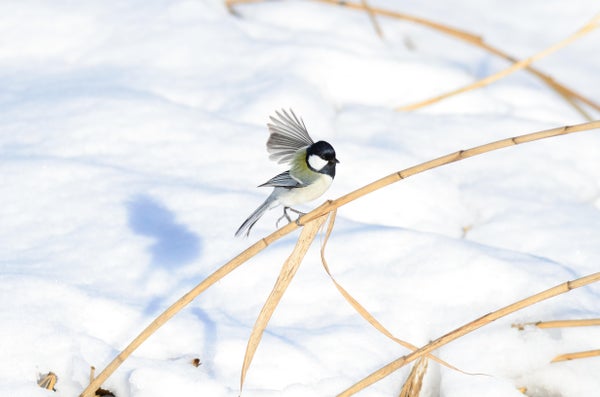[ad_1]
Wild Birds Gesture ‘After You’ to Insist Their Mate Go First
Like humans, these small Japanese birds communicate abstract concepts with gestures

Yasumasa Ochi/Aflo/Alamy Stock Photo
To communicate without words, humans use a host of gestures—whether a wave to wish someone goodbye, a thumbs-up to indicate approval or “flipping the bird” to suggest something far less polite. While animal researchers have observed species such as great apes, ravens and fish using gestures to communicate with others, those behaviors have typically been limited to so-called deictic gestures that convey more literal meanings, such as pointing out significant objects or locations. Symbolic gestures, on the other hand, convey more abstract messages and are thought to require more complex cognitive skills than nonhuman animals possess.
Now researchers have found, in a particularly polite example, the first documented evidence of a a symbolic gesture used by birds. When entering their nest box, Japanese tits (Parus minor) apparently flutter their wings to say “after you” to their mate.
For the new research, published on Monday in Current Biology, scientists in Japan analyzed the behavior of eight breeding pairs of the wild birds over 321 total nest visitations as the pairs brought food into nest boxes to feed their young.
On supporting science journalism
If you’re enjoying this article, consider supporting our award-winning journalism by subscribing. By purchasing a subscription you are helping to ensure the future of impactful stories about the discoveries and ideas shaping our world today.
Toshitaka Suzuki, an animal communication researcher at the University of Tokyo, and his colleague Norimasa Sugita of the University of Tokyo were interested in Japanese tits because of their complex vocal communications. These birds produce specific vocal sounds to convey messages that can be combined into phrases with particular grammatical rules. The researchers wanted to observe the tits’ behavior to determine whether body language was also part of their vocabulary.
One gesture in particular stood out. The researchers noticed that one member of a pair would often flutter its wings at its mate while standing in front of the nest box, a behavior that seemed to indicate that the other bird should enter first. Female tits performed the wing-fluttering gesture more often, after which their male mate usually entered the nest box. This happened even when the gesturing bird arrived at the box first. When the female bird did not flutter her wings, she tended to enter the nest box before the male bird.
The researchers propose that this behavior fulfilled the criteria of a symbolic gesture because it was only present with a mate, it stopped after the mate entered the nest box, and it encouraged the mate to enter without physical contact. The gesture was also aimed at the mate, not at the nest box, meaning it was not a deictic, or “pointing,” gesture to indicate an object of interest.
“They’ve done a really good job here of showing there is an association between this movement, this gesture, and then … the other bird doing something,” says Mike Webster, an ornithologist at Cornell University, who was not involved in the research. “It’s a really strong support to the notion that it’s a symbolic gesture. The bird that’s the receiver knows what it means, and it does what it’s supposed to do.”
Researching communication in nonhuman animals can help us better understand how humans evolved to communicate with our own symbolic gestures. One hypothesis suggests that walking on two legs allowed early humans to use their hands more freely, leading to the evolution of hand gestures. Suzuki says that when birds perch on a branch, their wings similarly become free, which could have led to the development of gestures like the “after you” wing flutter.
Next, Suzuki and Sugita plan to study whether these birds use any gestures that change when combined with their grammatically complex vocalizations. Humans combine gestures and spoken language to convey particular messages, Suzuki says, and we don’t know whether or how birds might do the same.
The findings have implications for understanding cognition and how birds think, Webster says, and similar gestures could be widespread in other species. “It implies that birds have a level of understanding of symbolism that probably a lot of people wouldn’t have given them credit for before,” he adds.
[ad_2]
Source link



